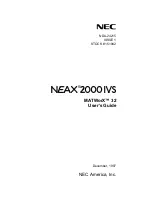
Chapter 17
454
A model’s parent and children don’t have to be models, however. Models, lights, cameras, and
groups all share the same parent-child hierarchy. A light, for example, can be the child of a group
and the parent of a model.
The primary benefit of these parent-child relationships is that they make it easier to move
complex models around in the 3D world and to have the component parts of those models move
together in the proper way. In the example of the car previously described, if the wheels of the car
are defined as children of the car model, then moving the car will cause the wheels to be moved
with the car in the expected manner. If no parent-child relationship is defined between the car
and the wheels, moving only the car will cause the wheels to be left behind in their original
position in the world.
Lights and cameras
Lights are used to light the 3D world. Without lights, the objects within the world can’t be seen.
Although lights control the appearance of the 3D world, cameras control how a sprite views the
3D world. A 3D sprite displays a particular camera’s view into the world. For more information,
see “About lights and cameras” on page 511.
Groups
Groups are collections of models, lights, cameras, or other groups. Groups let you rotate or
translate their contents simultaneously. A group has a name, a transform, and a parent, and it can
have one or more children. It has no other properties. The highest level group is the group called
“world,” which is essentially synonymous with the 3D cast member. For more information, see
“Groups” on page 462.
Shaders and textures
A model’s surface color is determined by its shader or shaders. You can draw images on the surface
of a model by applying one or more textures to each shader. For more information, see “Shaders”
on page 487 and “Textures” on page 494.
Modifiers
Modifiers let you control many aspects of how models are rendered and how they behave. When
you attach a modifier to a model, you can then set the properties for that modifier with Lingo.
Depending on the type of modifier you use, setting its properties can give you fine control over
the model’s appearance and behavior. Modifiers are described in “Working with Models and
Model Resources” on page 473 and “About lights and cameras” on page 511.
Animation
Director MX supports complex model animations through the following means:
•
The collision modifier let models respond appropriately to collisions.
•
The Bones player modifier lets models that have a skeletal structure defined in them play back
animations of those skeletons. These animations are created in separate 3D modeling tools.
•
The Keyframe player modifier lets models play back time-based animation sequences. These
sequences can also be created in separate 3D modeling tools.
3D animations are called motions and can be initiated by 3D behaviors or Lingo. For more
information, see “Animation modifiers” on page 502 and “Motions” on page 510.
Summary of Contents for DIRECTOR MX-USING DIRECTOR MX
Page 1: ...Using Director MX Macromedia Director MX...
Page 12: ...Contents 12...
Page 156: ...Chapter 4 156...
Page 202: ...Chapter 6 202...
Page 244: ...Chapter 7 244...
Page 292: ...Chapter 10 292...
Page 330: ...Chapter 12 330...
Page 356: ...Chapter 13 356...
Page 372: ...Chapter 14 372...
Page 442: ...Chapter 16 442...
Page 472: ...Chapter 18 472...
Page 520: ...Chapter 19 520...
Page 536: ...Chapter 20 536...
Page 562: ...Chapter 23 562...
Page 566: ...Chapter 24 566...
Page 602: ...Chapter 27 602...
















































